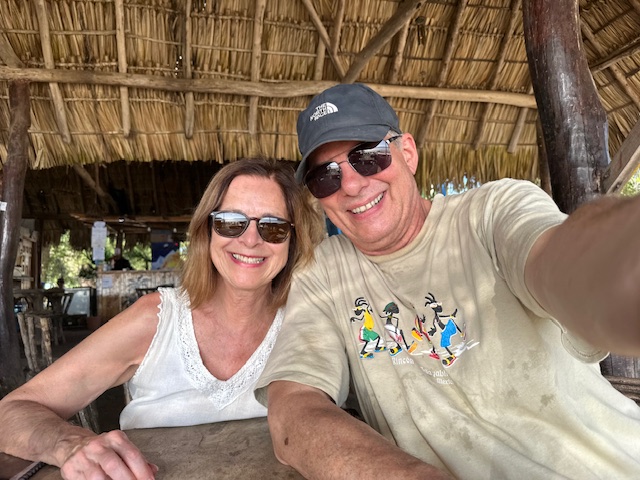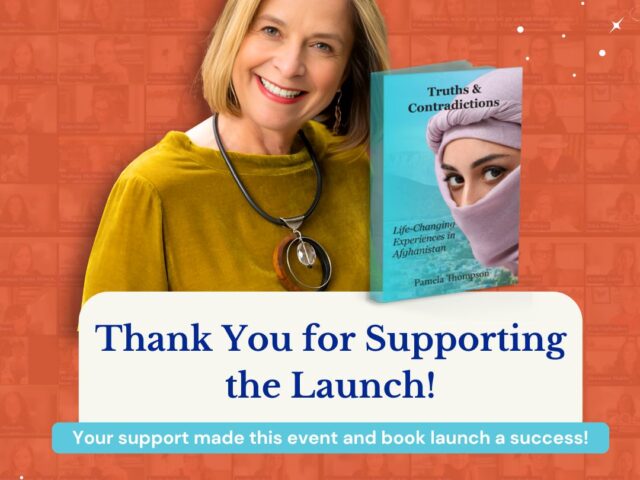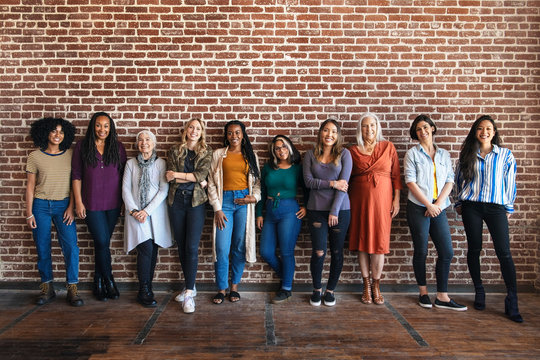Blog
Taking a Sabbatical: The Challenges & Opportunities
June 30, 2025
As a mission-driven, high-achieving woman, hitting pause can feel counterintuitive. We’re wired to create impact, to keep moving, to do....
Read More
Are You a Mission-Driven Woman and a Transformational Author in the Making?
May 28, 2025
Transformational Author in the Making? Have you ever felt like the chapters of your life were leading you somewhere deeper—but...
Read More
From Heart to Page: Birthing a Book with Purpose
April 9, 2025
Yesterday, I officially launched my third book “Truths & Contradictions: Life-Changing Experiences in Afghanistan”. Each book I’ve written has been...
Read More
Unstoppable: How Women Can Unlock Their Power and Transform the World
March 11, 2025
Have you ever stopped to consider the true power and influence you hold? Not just as a CEO, bestselling author,...
Read More
New Beginnings: What will You Do Differently This Year?
January 9, 2017
The beginning of a new year is a great time to think about what you will do differently in the...
Read More
How to Stay Healthy, Happy and Mindful during the Holidays
December 6, 2016
The holidays are a time of joy, laughter, connecting with family and friends, and celebration. They also may be stressful...
Read More
Anything is Possible!
November 21, 2016
I just finished reading my friend and colleague Barb Edie's inspiring new book Creating the “Impossible”. It reinforced my belief...
Read More
What Would You Do if You Had No Fear?
November 8, 2016
I invite you to ask yourself the question, What would I do if I had no fear? Notice what comes...
Read More
Are You Making Conscious Choices?
October 25, 2016
What is conscious choice? Sen defines it as “when you are making choices with the full understanding of reality, from...
Read More
You Can Become an Entrepreneur at Any Age!
October 4, 2016
I’ve had an entrepreneurial spirit for almost as long as I can remember. I recall catching minnows and selling them...
Read More
How You Can Find Peace Amidst the Chaos of Daily Life & Work
September 20, 2016
In this high-paced, “plugged-in” world we live in, now more than ever it’s important to have tools to find peace...
Read More
How to Finally “Let Go”
September 15, 2016
Two nights ago we pulled out of our driveway leaving the home where we had shared many happy moments over...
Read More
The Healing Benefits of Nature
August 9, 2016
According to the University of Minnesota’s Center for Spirituality and Healing “Research reveals that environments can increase or reduce our stress,...
Read More
Do You Want to have More Fun?
July 26, 2016
Many of my coaching clients when they start to work with me say that they want to have more fun....
Read More
Is a Mini-Sabbatical for You?
July 12, 2016
At a recent retreat, one of the commitments I made was to gift myself a mini-sabbatical. This meant taking Mondays...
Read More
Are You a Chameleon? … And is it Serving You?
June 13, 2016
A chameleon is a salamander that is able to change the color of its skin so it blends into an...
Read More
The Art of “Letting Go”
May 31, 2016
Have you ever been at a place in your life when you needed to “let go” in order to move...
Read More
The Silver Lining in Change: How to Regain Balance when You’re “Caught Off guard”
May 17, 2016
Two months ago, I felt like my life was turned upside down. My partner, Alan, was headhunted and offered a...
Read More
How You Can Integrate Work/Life Balance & Model it for Others
May 2, 2016
In a previous post I shared the attributes of a Balanced and Mindful Leader, one being “Understands the importance of...
Read More
Balanced and Mindful Leadership: What Do You Think?
April 15, 2016
I believe it’s time for a new type of leader, and a new type of organizational culture; one that focuses...
Read More



